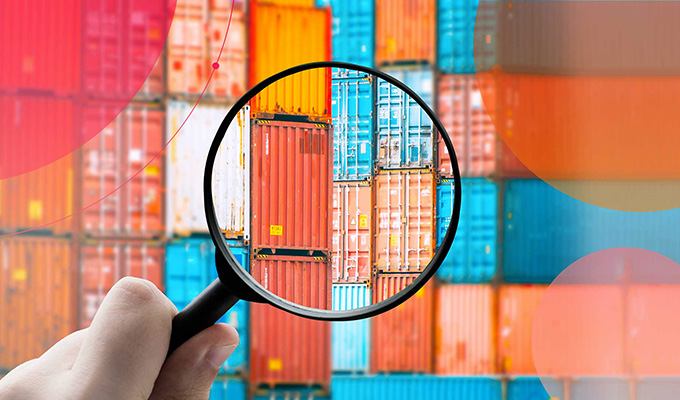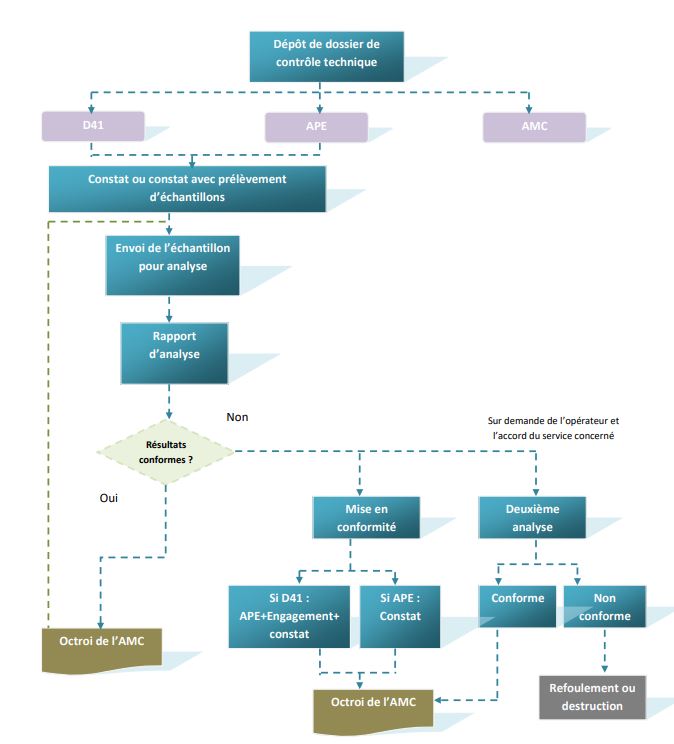Technical inspection procedure for imports


Among the three categories of products, it should be noted that the procedure for systematic technical control on import has some peculiarities in terms of the number of rules to be followed.
The procedure for systematic technical control on imports shall be governed by the decree of the Ministers for Trade and Crafts, Agriculture, Water Resources and Fisheries, Public Health, Industry and Technology, and Communication Technologies of 18 September 2010, establishing the procedures for systematic technical control on imports. It can be summarized as follows:
The importer or his authorized representative sends a file (in Arabic, French or English) consisting of the following documents to the relevant technical control department via the TTN platform:
- A request from AMC or APE signed by the importer (with a signature certificate issued by the ANCE);
- The purchase invoice domiciled with an authorised intermediary;
- The certificate of origin;
- The packing list;
- The technical file including, according to the nature of the product, technical sheet fixing the composition of the product, instructions for use, required safety rules, guarantee, etc. ;
- The transport document: Bill of lading notice, notice of arrival or notice of arrival of the goods;
- A copy of the product labeling, if applicable;
- Products of animal or plant origin must be accompanied by a health, sanitary or phytosanitary certificate and a certificate of non -radioactive contamination issued by the competent authorities of the country of origin or provenance;
- The relevant technical department may request further information from the importer if it considers that its file is incomplete. After studying the file, four alternatives are to be considered:
- Granting of the AMC: In this case, the importer can proceed with the customs clearance and removal of the goods.
- Granting of the APE: In this case, the importer can proceed with the customs clearance and removal of the goods and store them in his premises without being able to market them while waiting for the completion of the rest of the procedures (appointment, inspection, taking of samples and sending to the laboratory for analysis and testing). The importer is required to contact the technical control service in order to fix the date and place of the inspection within 15 days of the removal of the goods.
- Technical inspection at border points before the clearance of goods: The importer presents to the technical inspection service the customs document “Authorization for sample collection (D41)” to carry out the inspection and possibly take samples.
- Rejection or destruction of the goods: In this case, the importer may request a review of his file, otherwise, it is required to initiate the rejection or destruction operations and confirm to the organization concerned that the operation was carried out by submitting the documents justifying the execution of that operation. For the goods removed, the report which is drawn up by an executive notary is registered with the revenue of finance in accordance with the regulations in force. Concerning the goods at the dock, the destruction report is drawn up by the customs services.
For the second and third alternatives, samples are taken in the presence of the importer or his authorized representative at the border points or at his depot. These samples are then sent to approved laboratories for analysis.
The laboratory transmits the analysis results to the technical control service, which decides on the follow-up to be given to the file: granting of AMC, rejection, destruction or compliance if the defect in question does not present a danger to the health and safety of the consumer.
It is possible to have a second analysis at the request of the importer or if the technical control service deems it necessary.
Technical control procedure on imports
